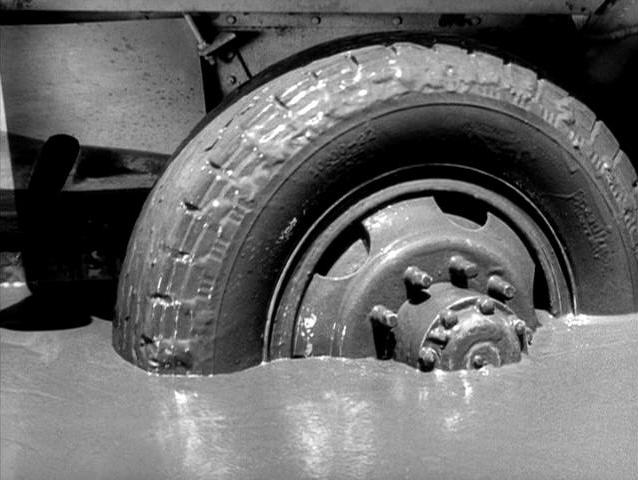
| 85 |

|
| 86 |

|
| 87 |

|
| 88 |

|
| 89 |

|
| 90 |

|
| 91 |

|
| 92 |

|
| 93 |
|
| 94 |
|
| 95 |
|
| 96 |
|
| 97 |
|
| 98 |
|
| 99 |
|
| 100 |
|
2008: Rank | Title | Year
All reviews © Nick Davis
Author's permission must be granted in writing for any duplication or publication.
Browse Films by
Title / Year / Reviews
Nick-Davis.com
Home / Blog / E-Mail
 #87: The Wages of Fear
#87: The Wages of Fearaka Le salaire de la peur in 2008: 71 dir. Henri-Georges Clouzot, 1953 scr. Henri-Georges Clouzot and Jérôme Géronimi; cin. Armand Thirard with Yves Montand, Charles Vanel, Folco Lulli, Peter van Eyck IMDb // Leave a Comment In 100 Words: You'd think I'd favor Clouzot's more actressy Diabolique, but I'd never seen anything like this film's blend of hefty, material-world suspense and existential drama, and I'm not sure I have since. Scenes unspool with the pristine visual logic and stomach-knotting tension of Hitchcock, though as memorable as it was when Norman Bates drowned a car in a brackish swamp, Wages's gestalt of a man coated in the muck he's trying to escape haunts me even more. As compelling a formal exercise as an epochal time capsule. Extra points for inspiring Sorcerer, one of the best cross-cultural reboots in film history. Food for Thought: Clouzot still doesn't fill the library stacks the way Godard, Resnais, Truffaut, and Bresson do, and some of the very aspects of Wages that make it so viscerally entertaining may also have discouraged academic commentary. Christopher Lloyd's compact 2007 study Henri-Georges Clouzot, from Manchester University Press's consistently interesting French Film Directors series, might offer a handy introduction to newcomers, though I admit I have not yet read the book myself. The most provocative treatment I found of Wages in particular was Claudia Barbosa Nogueira's essay "Roads to Nowhere: Borders and Belonging in Le Salaire de la Peur, also published in 2007, in the journal Symploké. She uses Michel De Certeau's theories of space to venture a political and regionally attentive reading of how Clouzot structures and moves through the film's ideologically loaded locations. Wages also appears as a privileged if concise exemplar of Lucy Mazdon's study of UK exhibition patterns for non-English films in her article "Vulgar, Nasty, and French: French Cinema in Britain in the 1950s," Journal of British Cinema and Television 7.3 (2010): 421-438. |
| Permalink | Top 100 | Home | Blog |